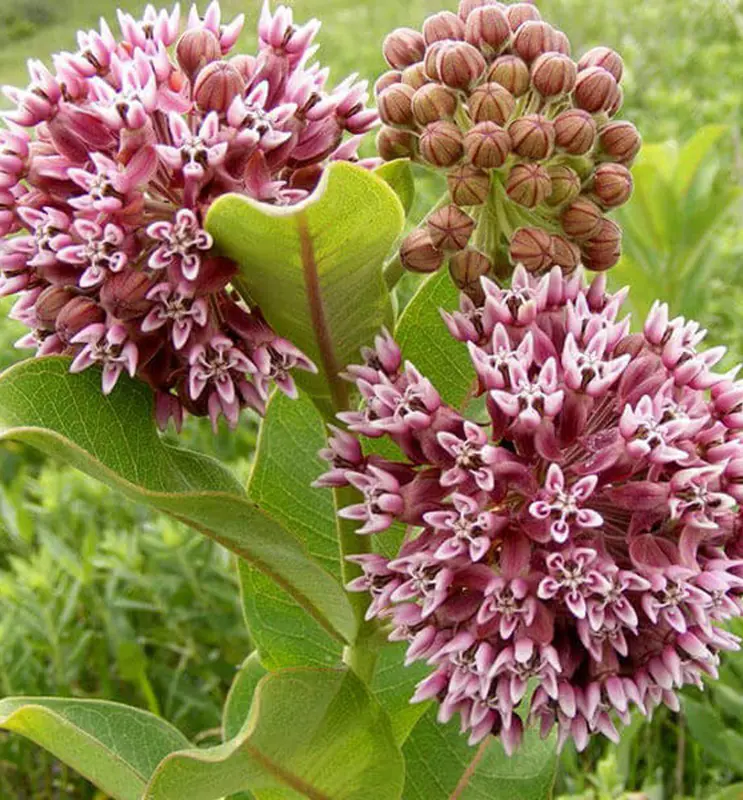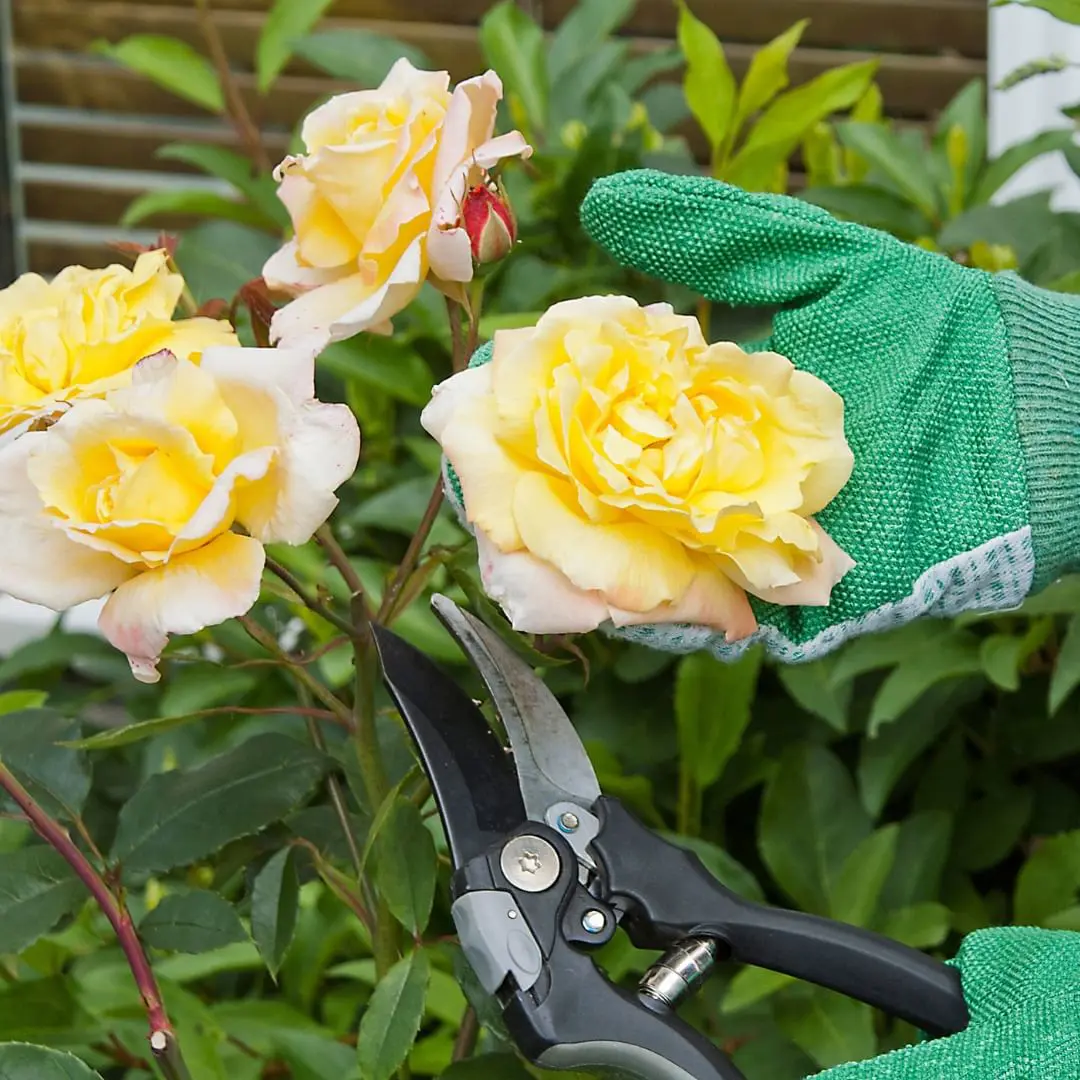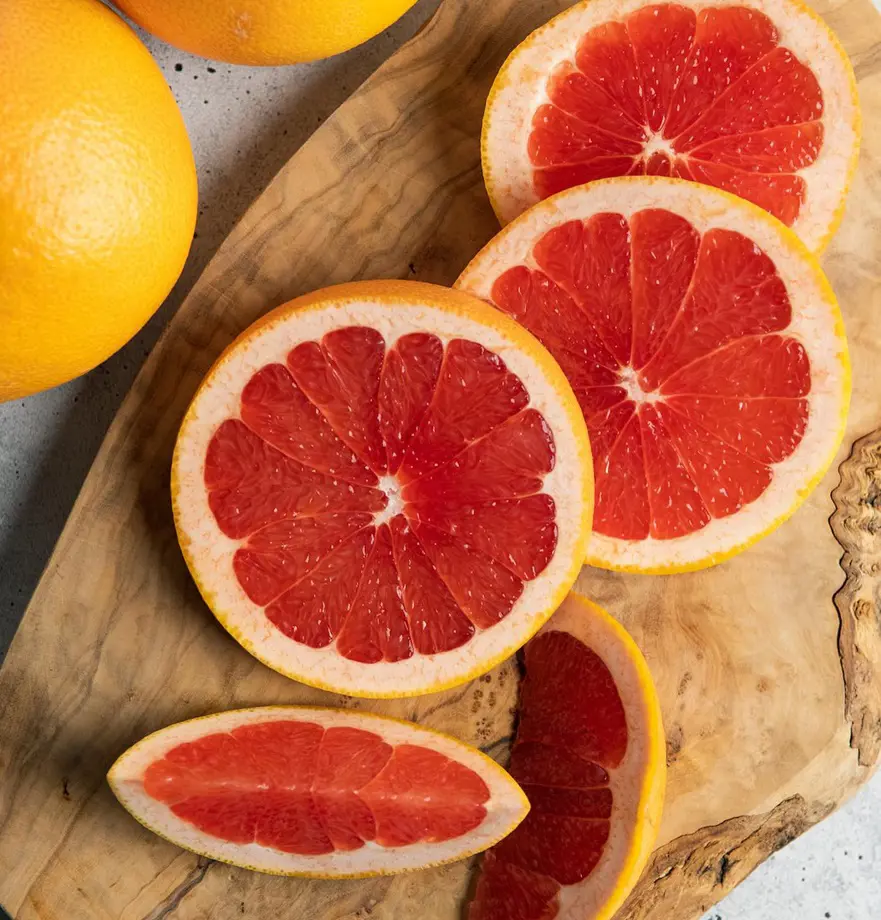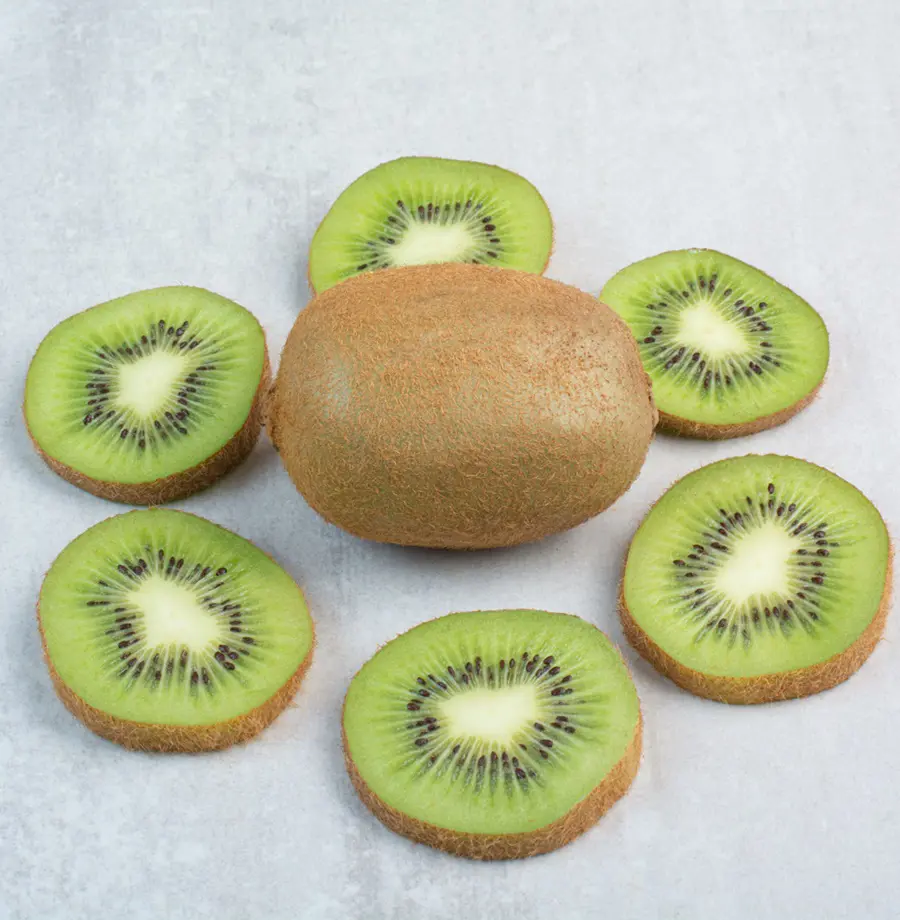15 Tips On African Violet Care & Growing

This post may contain affiliate links. If you make a purchase through links on our site, we may earn a commission.
African violets are tiny, colorful plants that people love to have indoors. They have soft leaves and make awesome flowers in colors like purple and pink.
What makes them extra special is their delicate appearance, so you need to be gentle with them. These flowers add a burst of vibrancy to homes and make people happy with their charm.
These charming little houseplants are also known for their velvety blooms and fuzzy foliage. But taking care of them can be a bit tricky! This guide gives you 15 important tips to help you make them thrive.
1. Lighting
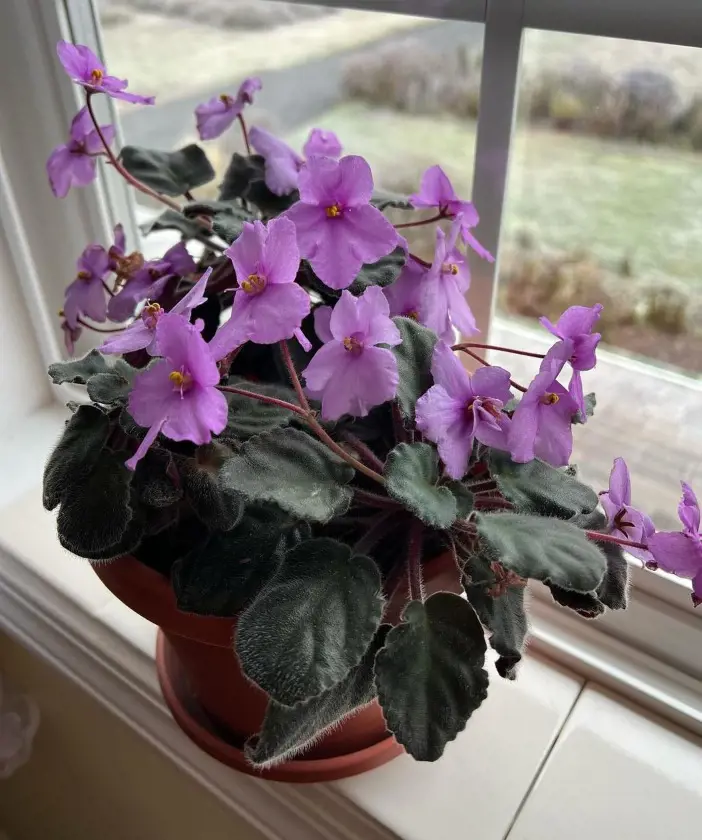
African violets need bright but indirect light, like a sunny window with sheer curtains. In cases of limited sunlight, using fluorescent lights also works well. This is beneficial for providing the necessary light conditions to keep these flowers flourishing indoors.
If these flowers receive too much light, their leaves may show signs of stress like wilting, yellowing, or browning. To prevent this, keep its container about 1 to 2 feet away from the light source. Also, turning the pot regularly helps ensure all sides receive light evenly.
2. Temperature

Keep your African violet indoor flowers in a room with consistent temperatures. As they prefer temperatures between 65 to 75°F, place them in a cozy spot away from drafts and sudden temperature changes. If it gets too cold, protect them from chilly drafts, and if it's too hot, shield them from direct sunlight.
If your plants are too warm, they might droop, develop discolored leaves, and produce fewer blooms. Check for limpness and changes in leaf color. To help them feel comfortable again, consider moving them to a cooler place, adding shade, or adjusting the room temperature.
3. Watering
When watering your African violet, start by checking if the top inch of soil is dry. If it is, place the pot in a sink or on a saucer, then gently pour water onto the soil until it starts draining from the bottom. This method ensures the plant's crown stays dry, preventing rot.
Because these plants have delicate stems prone to rot, it's crucial to keep the soil lightly moist and avoid overwatering. Always use lukewarm or room-temperature water, as chilled water may cause spots on their leaves.
4. Soil
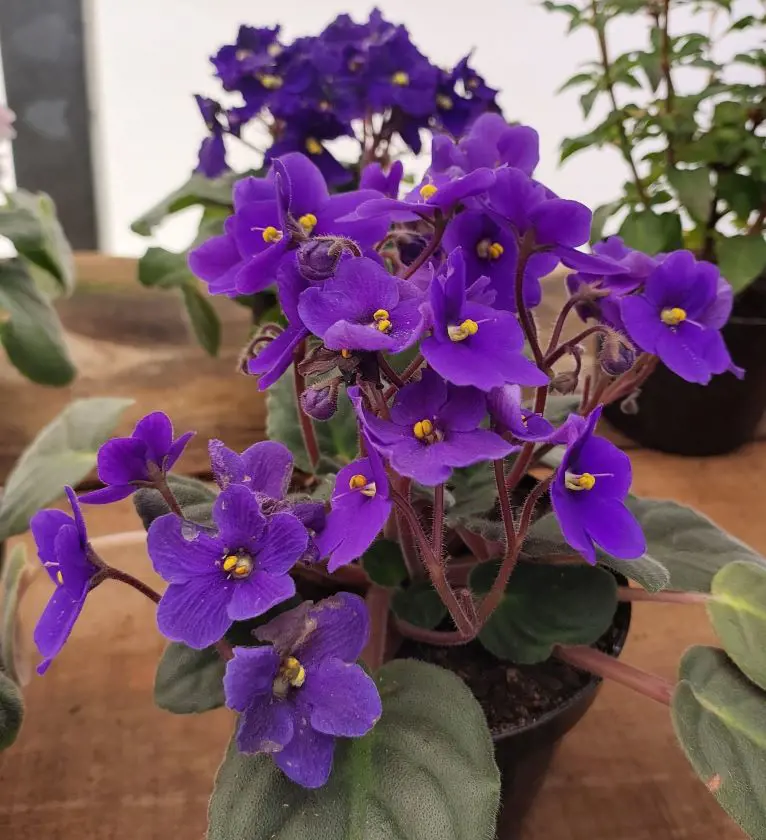
To help your violets grow well, use a special potting mix. This mix should have peat moss, perlite, and vermiculite. These ingredients make sure the soil lets in the air and drains water properly. Good drainage stops the roots from getting too wet.
This flower thrives in slightly acidic soil, with an optimal pH level between 6.0 and 6.5. If unable to maintain a pH level around this range, it may struggle to absorb essential nutrients from the soil.
5. Humidity
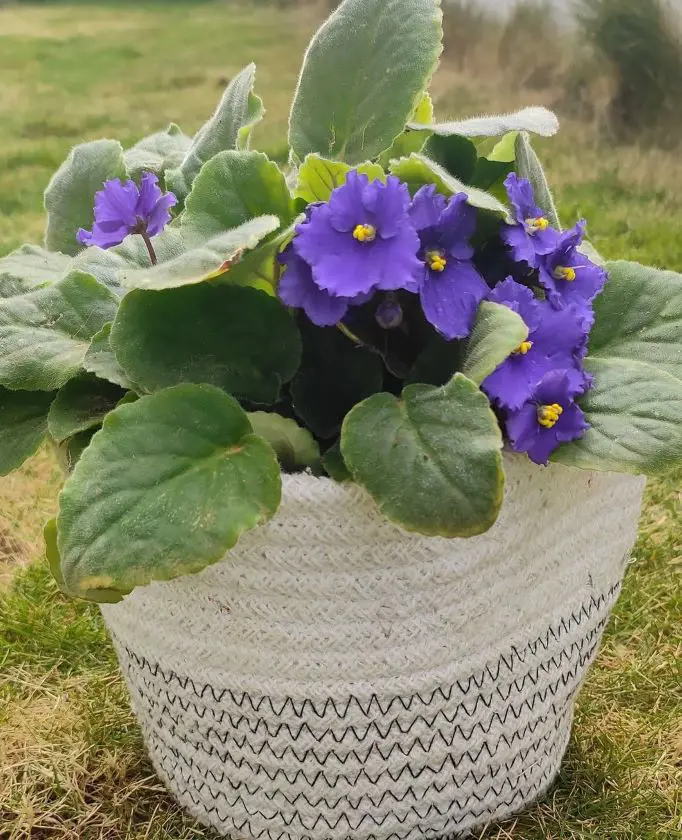
African violets prefer a comfy and slightly humid environment, avoiding extremes of dryness or excessive moisture. You may achieve this by aiming for around 50-60% humidity, which can be maintained by giving them a gentle misting or placing a water-filled tray nearby.
However, it is essential not to overdo it; they don't want to swim! Strive for a comfortable, misty day for them. It shouldn't be too sticky, and it shouldn't be too dry. Maintaining just the right humidity level encourages these flowers to bloom and thrive.
6. Containers
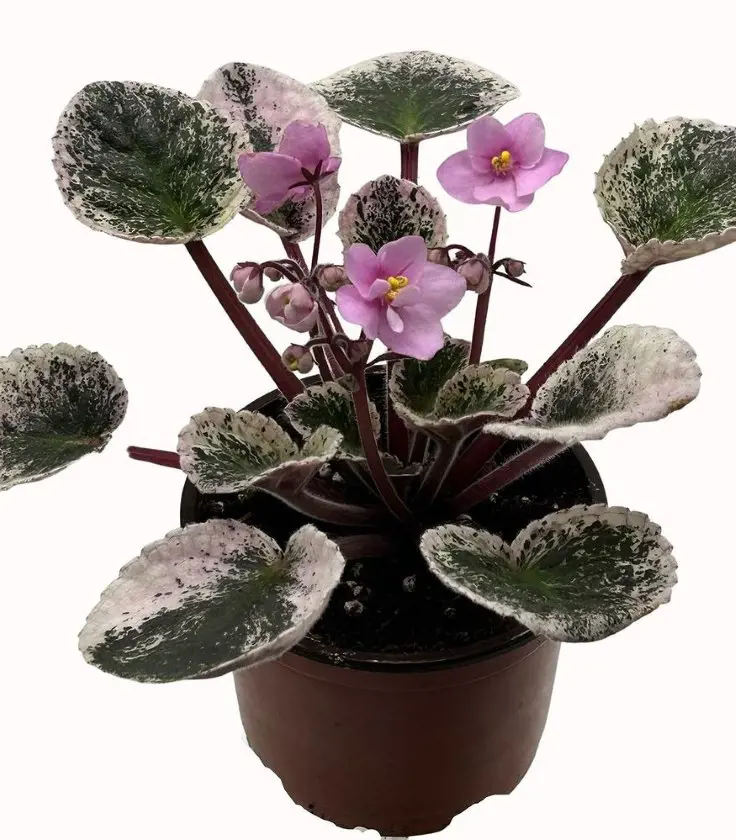
Always choose an African violet pot that's the right size for your plant. Pick a container with drainage holes at the bottom so that water does not stay around too long. These flowers flourish when their roots stay cozy. Therefore, a shallow pot becomes an ideal choice.
In addition, use a light-colored pot to let sunlight in from the sides. And remember, make sure it's clean before your violet moves in. Dirt and germs could harm the plant, potentially making it sick or slowing down its growth.
7. Fertilization
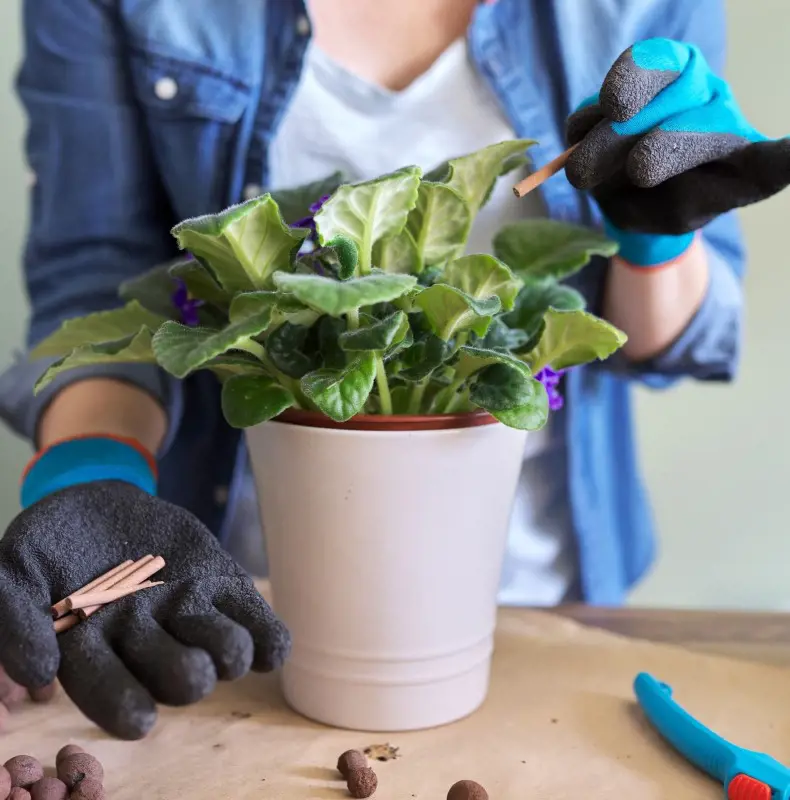
During the blooming season in spring and summer, nurture your African violets with care. Lightly fertilize every two weeks, using a half-strength balanced liquid fertilizer specially designed for this plant. This provides the necessary nutrients for vibrant blooms.
In contrast, when winter arrives, give them a break and skip the fertilization routine. Winter is a time for these lovely plants to rest and rejuvenate, allowing them to gather strength for the next blooming cycle.
8. Pruning
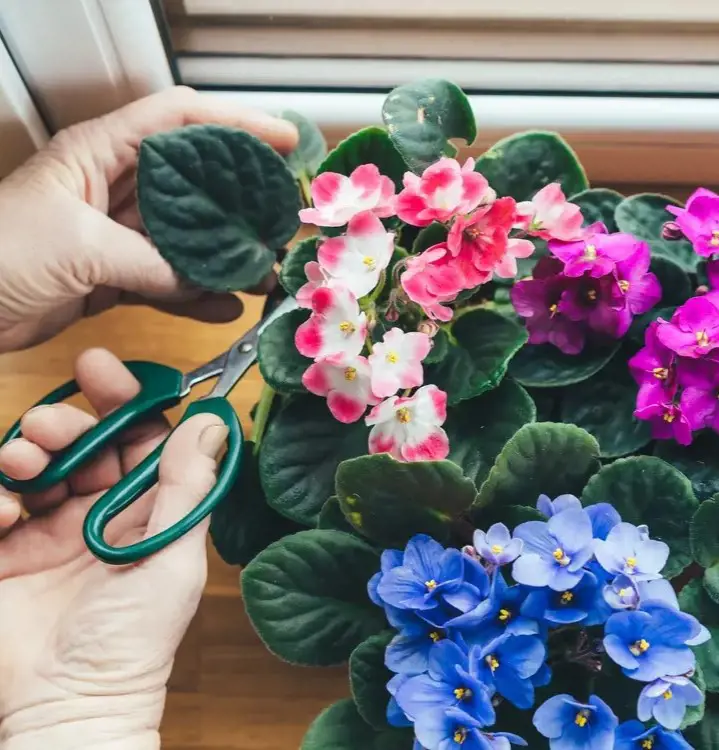
These plants are pruned once they finish blooming. This is usually done either using clean scissors or fingers, by gently removing the spent flowers and any yellow or leggy leaves. This process keeps the plant tidy and encourages new growth. Regular pruning with clean tools maintains the plant's health and development.
Removing old parts creates space for fresh leaves and blooms. Be careful not to cut the center crown, as it serves as the main stem, guiding the growth of new leaves and blooms. Consider regular pruning every few months to maintain a tidy appearance, but provide your violet with a break during the winter when it's resting.
9. Air Circulation
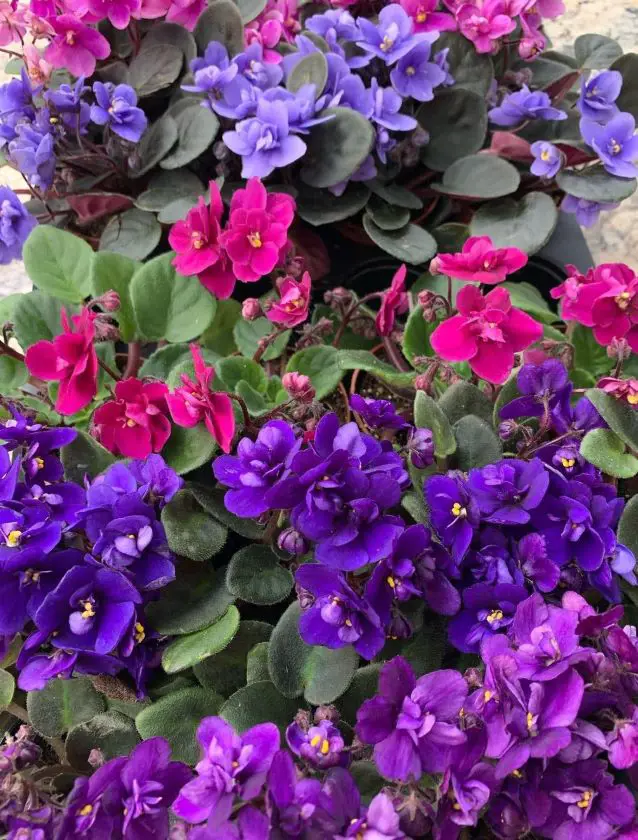
To ensure your African violet gets enough air, place it in a spot with good airflow, but not too drafty. Avoid crowding with other plants. Keep a little space around it. For extra freshness, use a low setting on a fan to gently move the air around occasionally. This prevents stuffiness, keeping the air fresh.
Also, ensure good air circulation by opening windows for a while each day, when possible. If you notice dust on the leaves, simply wipe it off with a soft cloth. This practice not only maintains cleanliness but also prevents problems like mold, contributing to the overall health of your violet.
10. Repotting
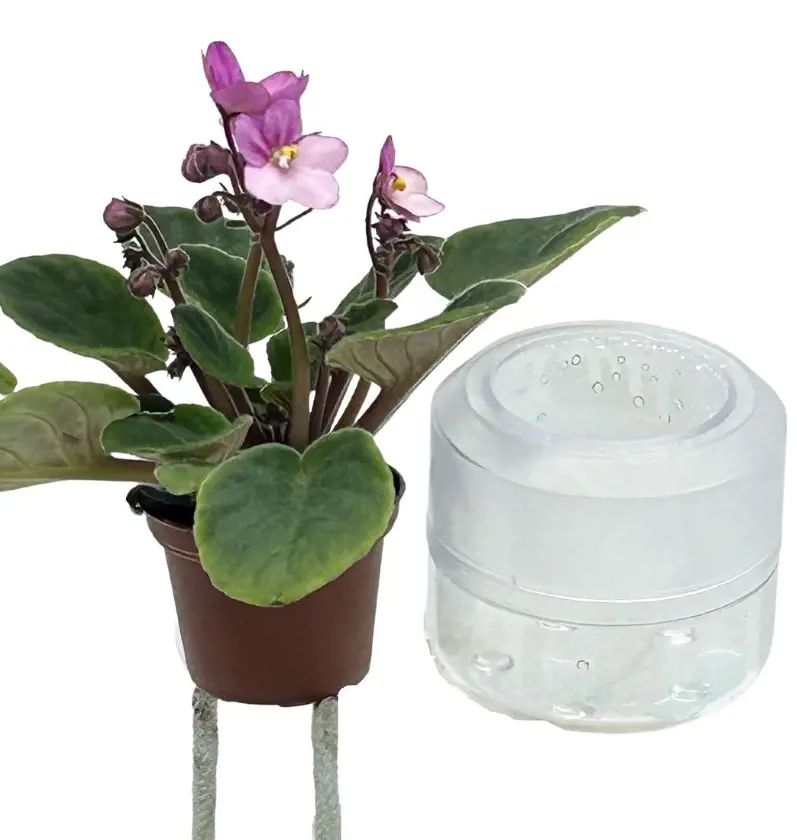
Repotting your African violet is like giving it a new home when it outgrows the old one or if the soil gets tired. You will know it's time when it looks crowded, and the soil isn't as fluffy. Generally, every 6-12 months is good.
For this, pick a slightly bigger pot with drainage holes. Gently take the violet out, shake off the old soil, and put it in the new pot with fresh soil. Water it well and let it settle into a new container. Repotting keeps your flower comfy, with space to stretch its roots and get the nutrients it needs.
11. Water Quality
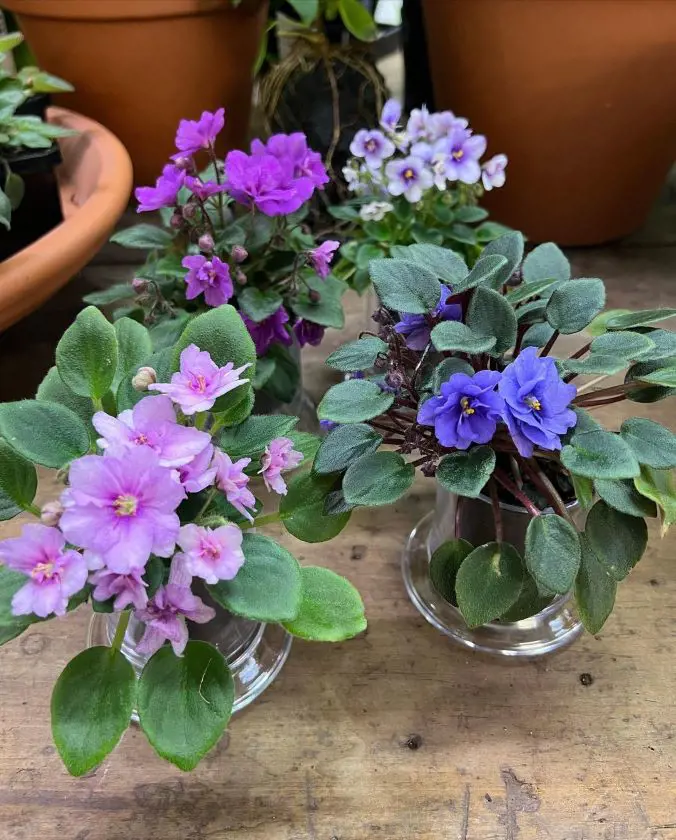
As we discussed earlier, violets should be watered once the soil is completely dry. What you need to know additionally is that you should always use either distilled water or rainwater that has been left out overnight to avoid chlorine. Chlorine can damage plant roots and foliage, leading to leaf burn and hindering overall growth.
Allowing tap water to sit out overnight before using it for watering gives the chlorine a chance to dissipate, making the water more suitable for the sensitive nature of violets. Hence, using distilled or rainwater, which is naturally chlorine-free, is an effective way to provide a healthier water source for these plants.
12. Avoid Wet Foliage
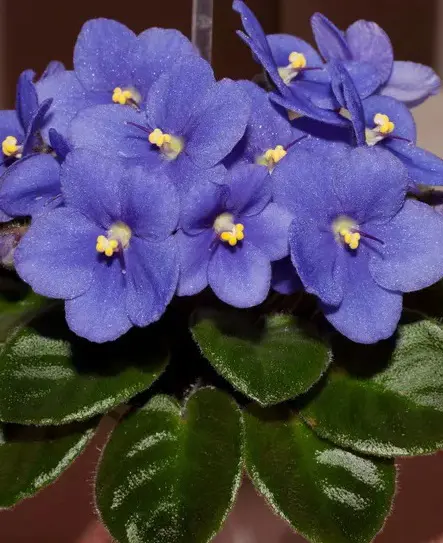
Wet foliage on these flowers can lead to specific problems such as fungal diseases, including leaf spots and rot. Excess moisture creates a favorable environment for these issues, potentially harming the plant's overall health.
Moreover, water droplets on the fuzzy leaves can act as magnifiers, intensifying sunlight and causing burns. To maintain the well-being of African violets, it's crucial to avoid wetting their delicate leaves and thus mitigate the risk of fungal diseases and sunburn.
13. Control Pests And Diseases
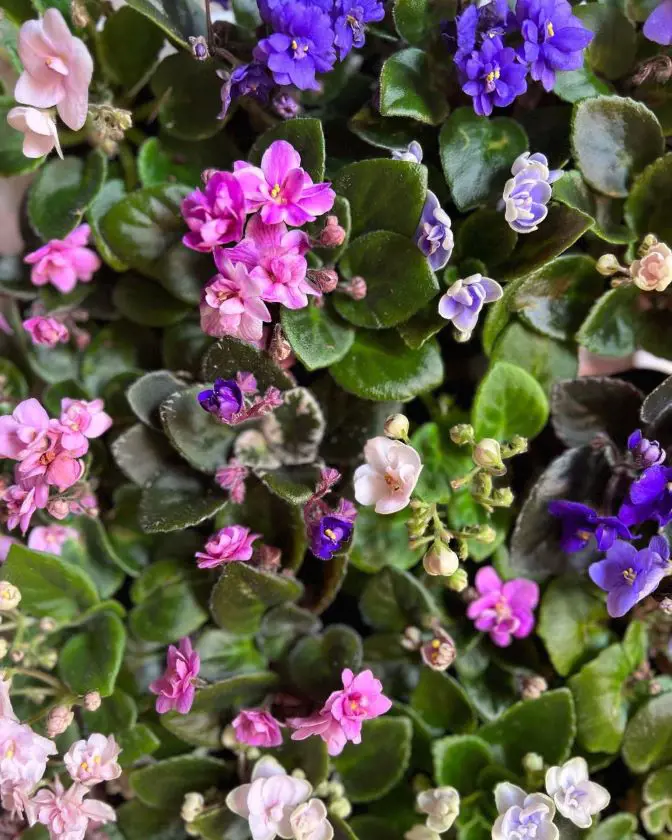
Taking care of African violets involves controlling pests and diseases to ensure their well-being. Pests, such as spider mites, white flies, and other flying insects, can nibble on the leaves, affecting the plant's health. Diseases are like plant sicknesses that can spread and harm the violet. Regular checks for any signs of trouble are important.
Using gentle treatments, like insecticidal soap or fungicides, can help address issues early on. By managing pests and diseases, we safeguard the vitality of our violets, allowing them to thrive with beautiful flowers and vibrant leaves, enhancing the joy they bring to our living spaces.
14. Use Shade Cloth

Although African violets enjoy bright light, too much direct sunlight can be like a hot sunburn for them. The shade cloth acts like a protective shield, reducing the intensity of the sunlight that reaches the plants. It's like putting on sunglasses to keep the sunlight gentle.
To make a shade for these flowers, use a 30-50% shade cloth and build a frame with PVC pipes or wood. Cut and attach the cloth to the frame securely. Place it above your plants for gentle sunlight. Check and adjust as needed.
15. Dusting
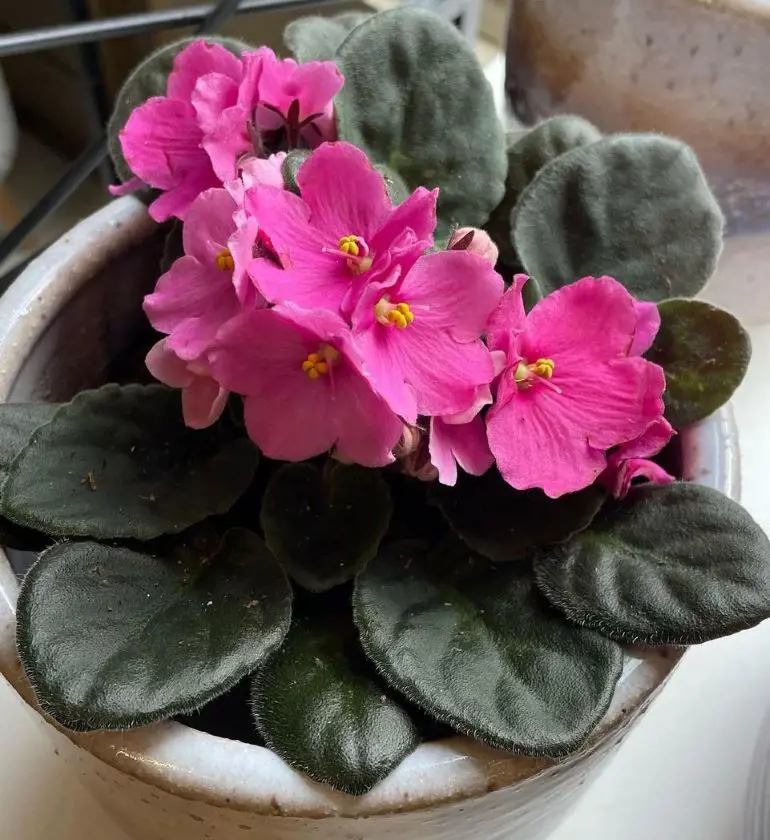
Dust can block sunlight, reducing their ability to breathe. By gently wiping the leaves, we ensure our violet can absorb sunlight efficiently, promoting better growth and lively blooms. Regular dusting also prevents pests and diseases, maintaining the overall well-being of these charming plants.
To dust African violets, use a soft, dry cloth or a gentle brush. Gently wipe or brush each leaf, starting from the base and moving towards the tips. Take care not to damage the delicate leaves. This ensures effective dust removal while preserving the plant's beauty.
Recent posts
Gardening
Gardening
How To Grow Grass From Seed? Planting And Caring Guide
Growing grass seems like an easy task. But the ones who are already into it know how much work and patience is required for its maintenance, to transform the outdoor space into a lush, green oasis. For beginners who are starting from scratch or someo...
Gardening
How To Grow, Plant And Care Milkweed From Seed
Planting milkweed from seed is one of the most satisfactory practices. It not only adds value to your garden aesthetics but also contributes essential instinct pollinators, including monarch butterflies. Many milkweed seeds germinate best when expos...
Gardening
18 Rose Colors And Their Meanings
Roses are not only elegant flowers but they also represent something more profound. Every color of a rose has its special meaning, making it a powerful tool when it comes to conveying messages in personal relationships and occasions. Ranging fr...
Gardening
When To Plant Vegetables – A Month By Month Calendar
Understanding when to plant vegetables is essential to successful gardening as timing alone can greatly affect the productivity and health of vegetables. A month-by-month planting calendar is useful because not every month is ideal for a specific pro...
Gardening
How To Prune Hydrangeas So That It Stays Healthy
The name hydrangea conjures clusters of flowers packed densely. Hydrangeas can grow in both old and old wood, and depending on the varieties, pruning time may differ. Pruning hydrangeas is a fundamental practice for gardeners wanting to maintain thei...
Gardening
How To Prune Roses With These 10 Steps
Pruning these thorn-filled plants might seem scary, but it's crucial for having abundant rose blooms. Cutting back old growth encourages new, vibrant growth, removes dead parts, and shapes the plant. This practice also reduces the risk of fungal dise...

